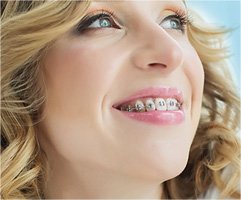Maintaining good oral hygiene is crucial when you have braces. Braces create additional nooks and crannies where food particles and plaque can accumulate, making it more challenging to keep your teeth and gums healthy. Flossing is an essential part of this hygiene routine, but it can be tricky with braces. In this blog post, we’ll guide you through how to floss with braces and provide related tips to ensure your mouth stays clean and healthy throughout your orthodontic treatment.
Why Flossing is Important with Braces
Flossing helps remove food particles and plaque from between your teeth and under the gumline, areas that your toothbrush can’t reach. When you have braces, it’s even more critical to floss regularly to prevent cavities, gum disease, and decalcification (white spots on your teeth). Proper flossing can help maintain your oral health and ensure that when your braces are removed, you reveal a beautiful, healthy smile.
How to Floss with Braces
Here’s a step-by-step guide to help you floss effectively with braces:
- Gather Your Supplies: You’ll need waxed floss, a floss threader, or special orthodontic floss that has a stiff end to make threading easier. You can also use other tools like interdental brushes or water flossers, which can be helpful alternatives.
- Thread the Floss: If using regular waxed floss, start by pulling off about 18 inches of floss. Thread one end of the floss through the eye of the floss threader. Use the threader to guide the floss under the main wire (archwire) of your braces, then remove the threader.
- Floss Between Teeth: Hold the floss with both hands and gently slide it up and down between your teeth. Be careful not to snap the floss, as this can damage your gums. Curve the floss around the base of each tooth and go beneath the gumline. Use a clean section of floss for each tooth.
- Repeat for Each Tooth: Move to the next tooth and repeat the process. Thread the floss under the wire again, and continue flossing between all your teeth. It might take a bit of time at first, but with practice, you’ll get faster and more efficient.
- Alternative Tools: If traditional flossing is too challenging, consider using interdental brushes or a water flosser. Interdental brushes are small, cone-shaped brushes that can be inserted between the teeth and braces to remove debris. Water flossers use a stream of water to clean between teeth and braces and can be a convenient option for many patients.
Additional Tips for Maintaining Oral Hygiene with Braces
- Brush Regularly: Brush your teeth at least twice a day with a fluoride toothpaste and a soft-bristled toothbrush. Consider using an electric toothbrush for more effective cleaning. Be sure to brush around all parts of your braces, including the brackets and wires.
- Use Mouthwash: An antibacterial mouthwash can help reduce plaque and prevent gum disease. Choose a fluoride mouthwash to strengthen your teeth and help prevent cavities.
- Avoid Certain Foods: Sticky, hard, and sugary foods can damage your braces and increase the risk of cavities. Avoid foods like gum, caramel, popcorn, and hard candies. Instead, opt for braces-friendly foods like yogurt, soft fruits, and cooked vegetables.
- Rinse After Eating: If you can’t brush immediately after eating, rinse your mouth with water to help remove food particles and reduce plaque buildup.
- Regular Dental Check-ups: Continue to see your dentist regularly for professional cleanings and check-ups. They can help monitor your oral health and address any issues that may arise during your orthodontic treatment.
- Orthodontic Wax: Use orthodontic wax to cover any brackets or wires that may be irritating your gums or cheeks. This can help prevent sores and make it easier to maintain your oral hygiene routine.
Flossing with braces may take a bit more effort, but it is essential for maintaining good oral hygiene and preventing dental issues during your orthodontic treatment. By following these steps and incorporating additional hygiene tips into your routine, you can ensure your teeth and gums stay healthy throughout your braces journey. At Drs. Savage, Sabol & Visser, we are here to support you with any questions or concerns about your oral hygiene. Contact us today to learn more about maintaining a healthy smile with braces.











